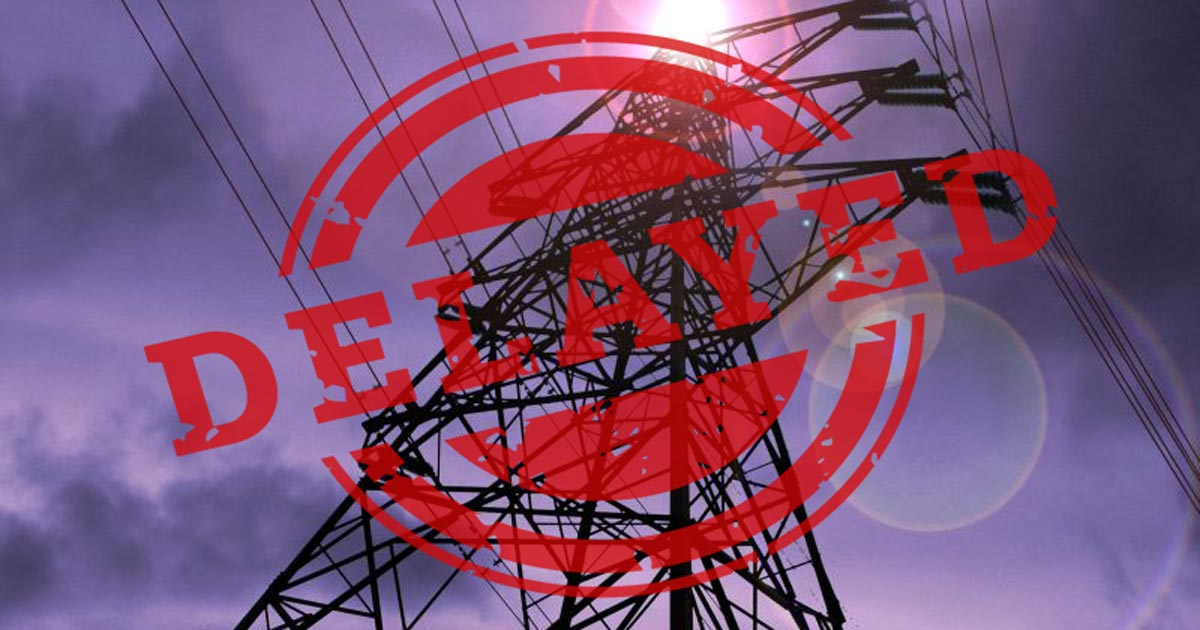WVTNP EES Submission Delayed

7 April 2022
Today Ausnet Services has revised the Environmental Effects Statement (EES) submission date for the Western Victoria Transmission Network Project (WVTNP) to enable more time to consult with landholders prior to submitting the EES on the proposed route and complete the field surveys and investigations required.
The submission date for the EES to the Department of Environment, Land Water and Planning (DELWP) has now been revised from mid-2022 to late-2022.
According to the announcement, the EES for the WVTNP will outline the existing environmental, cultural, land use and social values within the project area and the potential impacts of the project. It will also describe the proposed project design, technology and construction method, opportunities to maximise the benefits of the project and measures recommended to avoid and minimise impacts on landholders, communities and the environment.
What is an EES?
An EES describes a project and its potential environmental effects. It should enable stakeholders and decision-makers to understand how the project is proposed to be implemented and the likely environmental effects of doing so.
An EES has two main components.
- The EES main report – an integrated, plain-English document that assesses the potential impacts of the project on the environment and examines avoidance, mitigation or other measures to reduce the environmental effects. The main report draws on technical studies, data and statutory requirements such as specific limits for surface water and groundwater quality and waste discharge to the environment and should clearly identify which components of the scope are being addressed throughout.
- The EES technical reports – specialist studies, investigations and analyses that provide the basis for the EES main report. These reports will be exhibited in full, as appendices to the main report.
What is the EES Process?
The proponent (in this case AusNet Services) is responsible for preparing the EES, including conducting technical studies and undertaking stakeholder consultation. The Department of Environment, Land, Water and Planning (DELWP) is responsible for managing the EES process. The EES process has the following steps. (Status of steps has been identified below):
- Preparation of a draft study program and draft schedule by the proponent (complete)
- Establishment of an inter-agency technical reference group (TRG) convened by DELWP (complete)
- preparation and exhibition of draft scoping requirements by DELWP on behalf of the Minister (complete)
- Finalisation of the scoping requirements after considering public comments received during the advertised exhibition period, for issue by the Minister (complete)
- Commissioning and conducting EES studies, including peer review as appropriate, by the proponent
- Review of the proponent’s EES studies and draft documentation by DELWP and the TRG4
- Completion of the EES by the proponent
- Review of the complete EES by DELWP to establish its adequacy for public exhibition
- Exhibition of the proponent’s EES and invitation for public comment by DELWP on behalf of the Minister
- Appointment of an inquiry (panel) by the Minister to review the EES and public submissions received, and provide a report to the Minister; and finally
- Following receipt of the inquiry report, an assessment of the project’s environmental effects by the Minister for the consideration of statutory decision-makers.
As you can see by the completed steps above, there is a long way to go before the public exhibition phase and subsequent steps.
While the assessment of environmental effects of site selection, alignment and design alternatives must address the matters set out in these scoping requirements, the depth of investigation of alternatives should be proportionate to their potential both to minimise potentially significant adverse effects and to meet project objectives.
It is important to understand the requirement of the EES for proportionate investigations given AusNet Services have stated in the announcement today that it will be submitting the EES on the 'proposed route' and have not mentioned feasible project alternatives.
Without robust and proportionate impact investigations, the solution that delivers superior environmental outcomes can never be determined.
When will the public exhibition stage be?
Looking at the timings and volume of work still to be undertaken, it is likely the public exhibition stage will not be until early 2023. Let’s take a quick look at the following stages. Please note, dates are assumed and may not be accurate given specific timelines have not been provided by AusNet Services
August 2022: Completion of the EES by the proponent
September-October 2022: Review of the complete EES by DELWP to establish its adequacy for public exhibition
November 2022: The Victorian state election will be held on Saturday 26 November 2022. The government will enter caretaker mode on 1 November 2022 meaning the public exhibition state is likely to be delayed.
From this point on, it is difficult to determine the timeline given the potential change of government, appointment of a new Planning Minster and Christmas holidays. Meaning the remaining steps are likely to commence early in 2023. The updated timeline on AusNet Services website did not provide further clarity.
Watch this space though as the review of the complete EES by DELWP could result in additional delays if the depth of investigation of project alternatives is not considered proportionate.
For more information, visit these sites:

